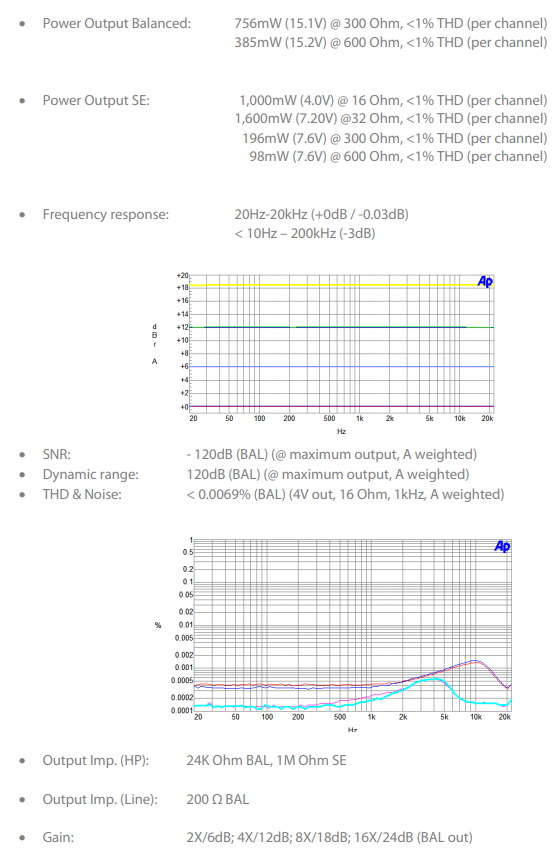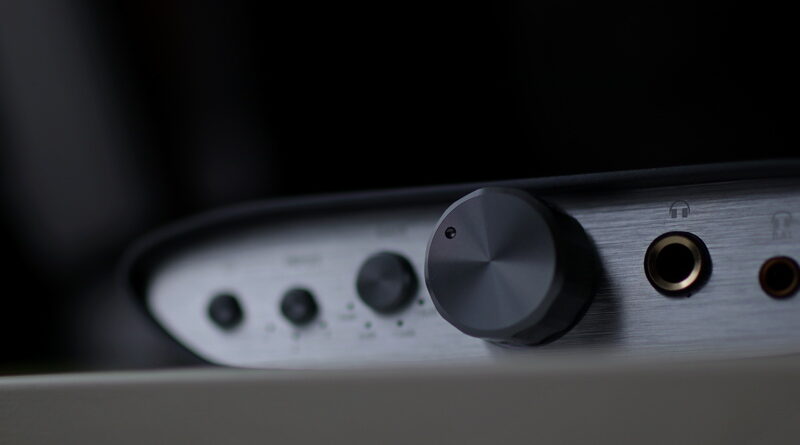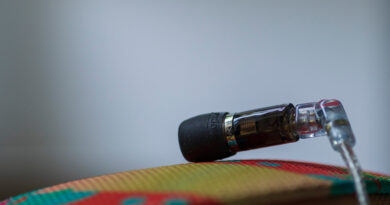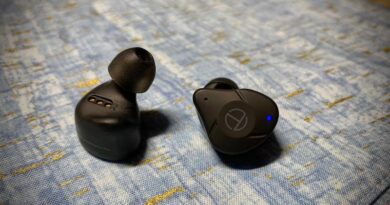iFi Audio Zen Can Amplifier Full Review – Ticking the right Boxes
Pros — Generally solid build quality
– Numerous input/output options cover most use cases (balanced/single-ended)
– More than enough output power for most headphones
– XBass and 3D effects are well-implemented
Cons — Design can be polarizing, buttons have poor feedback and rattles
– Stock power supply may not be iPower in some regions (reportedly)
– Not the best matching for sensitive IEMs
INTRODUCTION
“Can it power the Sennheiser HD650 to its full potential?”
This is the most common question I’ve been asked whenever there’s a talk about any good budget amp. Fortunately, nowadays there are numerous good offerings around the $100 mark that will power the HD650 and other such demanding cans with supreme authority. Yes, you can always try to get the last bit of performance out of these evergreen Sennheisers but diminishing returns quickly set in.
iFi Audio is a UK-based manufacturers focusing primarily on DAC and Amps in various form-factors. A few of their products have received critical acclaim, especially the iDSD Black Label and the Pro iCan/xCan flagship amp/DAC duo.
The iFi Zen Can is part of the recently released Zen stack and is meant to be paired with the iFi Zen DAC. Both the DAC and amp have practically the same chassis and looks rather retro when stacked. You can of course choose a DAC of your own preference and at times get even better performance (more on this below). Nonetheless, the iFi Zen Can aims to be the de-facto solution to powering high impedance full-size cans. Let’s see how well it fares against the stiff competition.
Note: the ratings given will be subjective to the price tier.
Headphones/IEMs used: Sennheiser HD650, Final Sonorous III/E5000, Hifiman Ananda, Dunu Studio SA6
Price, while reviewed: 170 euros.
PHYSICAL THINGS AND USABILITY
IN THE BOX…
The iFi Zen Can comes with a pair of RCA-cables to use as analog interconnect (rather short, may require upgrading), a 3.5-to-6.35mm adapter, and a power supply. In some regions you get the iPower bundled in the box whereas in others (e.g. Singapore from what I hear) you get a generic adapter. I will highly recommend getting a good quality power adapter (if you don’t get the iPower in the bundle) since the generic adapter is very prone to mains noise and EMI and will generate a lot of background hiss/whine.
The cost cutting becomes rather evident in the accessory set but I guess that’s expected at this price-point.
3.5/5
APPEARANCE, HAPTIC, AND BUILD QUALITY
The iFi Zen Can feels positively dense in hand with its sandblasted Aluminium finish (gray). There are four rubber feet at the bottom of the unit to ensure stability when put on the desk. The general shape is quite curious and deviates from the boring box-shaped DAC/Amps out there. It’s a bit of retro look and while I myself find it nice some have reported their displeasure at the asymmetric design. It looks better in person than in the photos so there’s that. The overall profile is rather compact and should fit even small desk setups.
The back of the unit (from the left) houses the 4.4mm balanced input, 3.5mm single-ended input, and RCA analog inputs. Then we find the balanced output (line-out) and finally the 5V DC power port.
The front of the iFi Zen Can has the headphone outputs (6.35mm unbalanced, 4.4mm balanced/pentaconn). From the left, we find the power button, the input selector (RCA, unbalanced 3.5mm, balanced 4.4mm), the gain control (0/+6/+12/+18dB), the volume wheel, and the XBass/3D mode selector (toggles between XBass on/3D on/both on/both off).
The volume wheel is very smooth and has beveled edges around it for easier grip. I wish it had a bit more tension but that’s a minor nitpick. My major gripe lies with the rattling buttons on the front panels themselves. They rattle every time you move around the unit and feels rather cheap/finicky when toggling them. The buttons themselves are aluminium (or so it appears) so this seems to be a curious design choice. If I had to change one thing about the Zen Can’s build — it would be these buttons. Other than that this rather budget amp has covered practically every input/output most users will ever need (barring XLR but I don’t expect that in such a budget device).
4.5/5
TECH INSIDE
Let’s get the specs out of the way first:

For more info, you can check the Zen Can product page.
The internals of the Zen Can is its most interesting aspect IMO. iFi has apparently trickled down the amplifier circuit from their flagship Pro iCan to the Zen Can, albeit in a smaller package (and with lower output power). Then again, 1.6Watts of output power (@ 32 ohms) from the single-ended out is no joke. The balanced circuit is a dual-mono configuration and when paired with the balanced out from a DAC you shall get a fully balanced configuration (unlike certain THX amps).
The amplifier operates in discrete class-A (no A/B switching here) and employs a FET input (high input impedance, low output impedance) to improve distortion/SNR figures. Frankly, the THD% at 0.007 is not class-leading by any means. However, amps are more than measurements (for me at least) and better measuring amps at times can sound lifeless and sterile. Just listen to one of them THX amps and you’ll know what I mean.
There’s enough voltage swing in the Zen Can to power amp picky headphones like the HD650 and the HD800. The former works well with >5V voltage swing and the Zen Can definitely exceeds that even in lower gain levels.
As for the rest of the features, we got two iFi signature “circuits” inside: the XBass and 3D circuits, both of which are analogue signal processing circuits. XBass adds a sizeable bass-boost throughout the entire bass-range (from upper-bass to sub-bass). Fortunately, it’s not a bass-shelf (where all bass frequencies are similarly boosted) rather a gradual rise from 300Hz downwards. The sub-bass regions get a major lift by ~7/8dB and can solve some of the bass issues in open-back headphones, esp the likes of HD650. It’s definitely not for everyone though and not every headphone will react the same. HD650 for example has high distortion in the sub-bass region and in some bass-heavy tracks you’ll hear the driver cranking under pressure. It’s always good to have the option though and in many times I found myself keeping the bass boost on.
The 3D effect is a bit more subtle yet noticeable. The stage seems to get wider and deeper while lower-treble gains more presence. I personally didn’t like this effect as it made the midrange thinner than I prefer. For gaming this might come in handy though and again — it’s better to have this option than not.
As an aside, the internal components all seem to be of high quality so long-term durability should be quite good.
SOUND
The Zen Can has a warm-neutral sound overall. It’s pretty transparent to the source in fact and won’t color the music in any destructive manner. The treble is a bit less clinical than certain THX amps but that’s about it (can be a good thing if you don’t like treble glare). The gain levels up to +12dB is very usable. The +18dB gain can vastly increase grain and his s so I tended to not use that mode and frankly +12dB gain is more than enough for my use-cases and powered all my headphones to deafening levels.
The staging isn’t as wide or deep as the THX amps or some higher-tier class-A designs but at this price range I don’t expect that either. Dynamics are mostly good with headphones but no so much with IEMs (more on this later). Overall resolution is what you’d expect — as good as the source itself (audibly transparent to the source). The biggest issue lies with the PSU for me as with the generic (non iPower) PSUs in some regions you will get audible hiss and a reduction in dynamic range/staging. Switching to iPower X ($100) will fix that but that investment takes it into another price category.
Qualms with PSU aside, for the price the Zen Can drives headphones as well as any other amps in this range. The 3D and XBass effects can be very fun to use and definitely adds to the overall package.
4.25/5
PAIRINGS
I’ve found the Zen Can to pair the best with the HD650. In fact, I suspect the Zen Can was created specifically to match with the HD650/6XX/600 and the likes. The dynamics were spot-on, with the bass boost you could hear some decent sub-bass rumble and the stage depth was better than most amps in this range. If you plan to get the Sennheiser HD6XX or any other 6 series Sennheiser headphones, this is the amp to get for ~$200, period. Planars also fared well and for the likes of Sundara/Ananda this can be a great amp.
However, IEMs were a different story altogether. They got loud to dangerous levels but the overall presentation lacked dynamics and fell flat. In fact some IEMs like the Final E5000 (requires a good amp to shine) were muddy, bloated mess on the Zen Can despite being properly driven on paper. Same applied to some multi-BA IEMs. In general I don’t think the Zen Can is a good match for IEMs, then again the name itself has “Can” in it so there’s that.
Overall, for high impedance full-size cans the Zen Can is a great match. For IEMs — not so much. For IEMs though I’d not recommend such a behemoth for the most part and a simple DAC dongle will serve you well. For those who need best of both, however, this might fall short.
4/5
SELECT COMPARISONS
vs Topping L30 ($150): This particular amp used to be the darling amp of the budget conscious. Incredible measurement figures, vanishingly low THD, tons of drive and best of all — could power IEMs and full-size headphones just as well. Too bad that they started to explode. Well, not all of them, more like a few of them, but it’s more than enough to raise concerns and this potential hazard alone dismisses Topping as a competition. I put this here mostly to warn people and until Topping proves that they have put more than enough safety measures in their amp I won’t recommend Topping products to anyone.
vs JDS Atom amp ($100): The Atom amp is even more neutral and that could be a good or a bad thing. It doesn’t have as much raw power as the Zen Can but from my experience it drives IEMs better than the Zen Can and also has less issues with mains noise. It does lack balanced out so there’s that and the overall build is a step down from the Zen Can esp the volume pot. Still, a very good choice for most budget buyers and can be a good alternative to Zen Can albeit without the bass/3D effects and a more clinical presentation.
vs SMSL SP200 ($270): Ah, the magical THX amp circuit that makes everything sound awesome. Not really. The SP200 is one of the least dynamic and most anemic sounding amps that I’ve ever encountered in this range. This thing is practically lifeless and sounds very dis-engaging (if that’s the correct term). The XLR inputs and such are nice touches but the way it presents sound is not my cup of tea. If you like a very sterile presentation you may give this a shot but I’d recommend not being swept up by “THX *random three digit numbers*” marketing jargon and actually listen to them before making a decision. Needless to say — I prefer the Zen Can much more, even with IEMs.
vs iFi Neo iDSD ($700): David vs Goliath, or so they say. I’ll be blunt: I prefer the Zen Can’s output (for using with the HD650) more than the Neo iDSD’s headphone output (balanced). With IEMs I do prefer the Neo iDSD but the Zen Can pairs so well with the HD650 that even iFi’s far higher tier offering doesn’t sound as nice or engaging, IMHO. The XBass effect is also absent from the Neo iDSD which is a slight letdown. Nonetheless, Neo iDSD review is coming soon and while it generally trounces over the Zen Can with most headphones and IEMs, the HD650 is the one headphone that sounds better on the Zen Can than on the Neo iDSD.
CONCLUDING REMARKS
The iFi Zen Can is the best amp under $200 for the Sennheiser HD6XX/650/600. That’s basically my takeaway after testing this amp for 2+ months. For similar high impedance dynamic drivers and low sensitivity planars — the Zen Can is is very capable indeed. IEMs and very sensitive headphones are where it falls somewhat short.
The design can be questionable and the power adapter situation is a bit strange (though most regions get the iPower X but still something you should discuss with the dealer beforehand). For 170 euros though, there really aren’t any deal-breaking issues here for the most part as long as powering full-size headphones is your concern.
These don’t explode and kill your headphones in the process *cough* L30 *cough* and of course — sounds great with high impedance cans with ample headroom/drive. I recommend the Zen Can for such use cases, and highly recommend it if you own the classic Sennheisers and want an amp in a budget that can do justice to it.
MY VERDICT
Overall Rating: 4.25/5
Recommended (for powering high impedance headphones and planars)

DISCLAIMER
Lawrence Lee of iFi was kind enough to send the iFi Zen Can as review loaner.
Our generic standard disclaimer.
You find an INDEX of our most relevant technical articles HERE.






PHOTOGRAPHY






Snappy review!